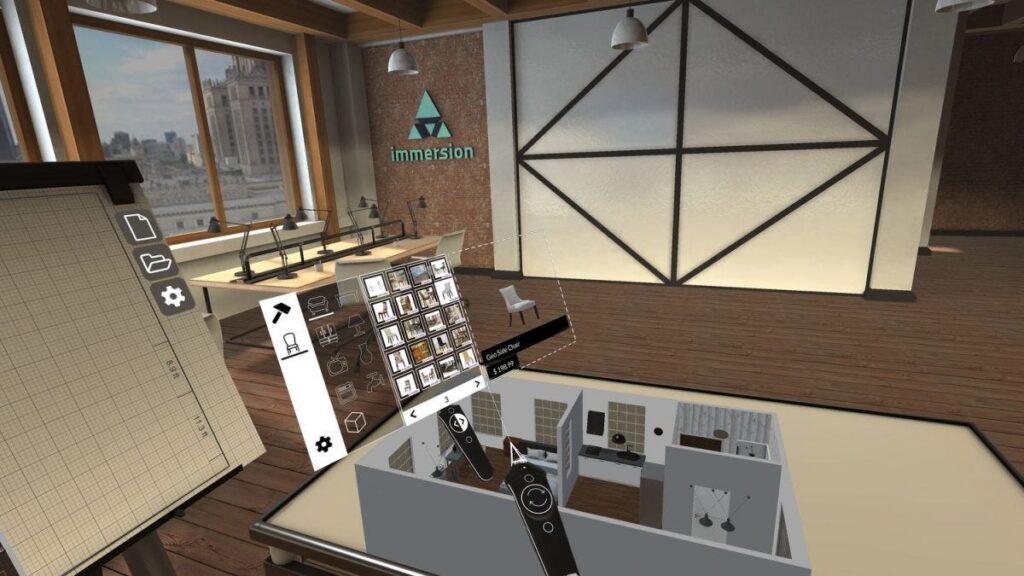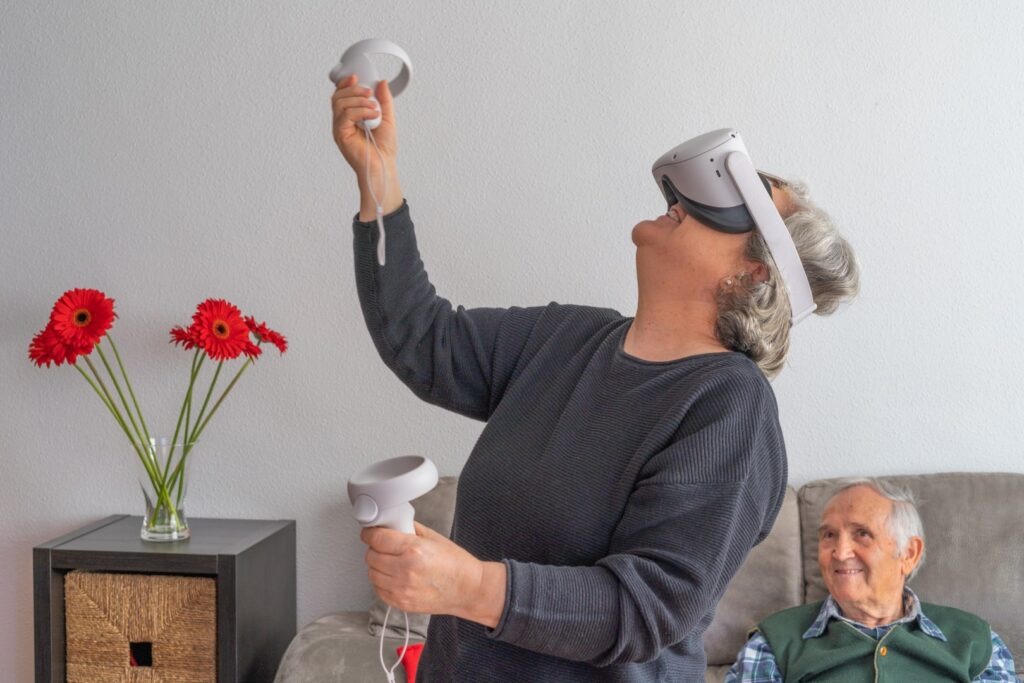In this era of virtual health tools and technology, we’re looking at how Virtual Reality (VR) and Augmented Reality (AR) can improve the quality of life for the senior community. The benefits of augmented reality and virtual reality for seniors are becoming more apparent every day. As these digital innovations increasingly influencing the way we live, learn, and play. Fundamentally transforming how we interact with the world.
These VR and AR technologies are shaping to be a boon to the senior community. Promising to improve health and wellness in a multitude of ways.
The Relevance of VR & AR for Seniors
VR is a technology that creates a simulated environment, while AR overlays digital data on real-world elements. From enhancing our shopping experiences to making learning more immersive, VR and AR are transforming how we interact with the world.
How Does VR & AR Work?
In simple terms, VR takes you to a different world. Using a special VR headset, people are digitally transported into an immersive virtual environment.

AR, on the other hand, adds digital elements to your existing world which are perceived through a device like a smartphone or smart glasses.

Is VR Good for Seniors?
We’ve already seen that by embracing digital wellness apps, seniors can unlock a new dimension to their health journey.
Current research has shown that VR for seniors can bring numerous benefits. Boosting brain health, enhancing physical fitness, and promoting social interaction.
So let’s take a deeper dive into the benefits of AR and VR for seniors.
Benefit 1: Cognitive Health Enhancement
VR and AR can be used to prevent cognitive decline in seniors and improve their quality of life.
Through mind-stimulating activities and environments, VR and AR help in boosting cognitive health. They’re effective tools for memory improvement, keeping the brain active, and boosting concentration.
Benefit 2: Improves Physical Fitness
One of the most well-known applications is virtual reality exercise for seniors. Offering fun and engaging workout routines right at home. Using immersive experiences with sweeping landscapes or joyful interactions, fitness VR games for seniors are making exercise more accessible and enjoyable.
These exercises extend to rehabilitation or physiotherapy as well. Virtual therapy could give seniors a safe environment to practice their rehabilitation exercises. It has the added advantage of providing distractions to help ease the pain.
Benefit 3: Prevents Social Isolation
One of the prime benefits of augmented reality and VR for seniors is promoting social engagement. Virtual communities provide a platform to maintain connections and build new relationships. Seniors can go virtual shopping with their friends or play games with their children — no matter where they are!
Benefit 4: Immersive Learning
AR and VR experiences for seniors provide powerful tools for learning. Seniors can dive into virtual training and education like never before. Fancy learning about the Renaissance? You can roam around 16th-century Italy with VR. Interested in birdwatching? AR can help you learn to identify the birds you see and learn more about them.
It’s like having a personal tutor and a teleportation device rolled into one.
Benefit 5: Experiential Journeys
Seniors can travel the world and even time travel. It’s an adventure without ever stepping out of your living room. Seniors can go walking on the moon, diving in the Great Barrier Reef, or exploring the wilds of the Amazon rainforest, all while couched in a safe environment.
Whether it’s revisiting cherished places or discovering new ones, VR and AR can turn armchair travel into immersive, real-feel experiences.

Analyzing the Benefits vs. Risks for Seniors
While VR brings many benefits, it also has some negatives. Some seniors might experience disorientation or motion sickness. Therefore, it’s crucial to consult with healthcare professionals before using VR.
Who Should Not Do VR Games?
People with epilepsy or serious vision impairments should avoid VR without professional guidance.
VR has also been known to trigger motion sickness in some people. This motion sickness (or cybersickness) is due to the disconnect between your mind perceiving motion and your body remaining still. For most people, reducing the length of time spent in VR can help prevent feeling ill.
Making Virtual & Augmented Reality More Senior-Friendly
Addressing & Overcoming Potential Challenges
To make VR and AR more accessible to seniors, challenges like usability and comfort need to be addressed. Some of the main issues are the weight of a VR headset and the level of dexterity required to operate certain VR apps or games. Also, while it’s possible to use VR headsets while wearing glasses, it’s not comfortable for long periods of time.
Fortunately, most companies are innovating to make their products lighter, easier to handle, and less technical. All of which will help make them more senior-friendly.
Guidelines for Selecting the Right Equipment for Seniors
When selecting VR and AR equipment, seniors should consider factors like comfort, user-friendliness, and customer support. The Meta Quest VR Headset is a popular choice with a wide range of apps, games, and experiences available. Or if you just want to dip a toe in the water, the Panosite VR Headset is a cost-effective option.
Try reading some product reviews and or ask an expert for their recommendations based on your needs.
The Future of VR & AR in the Senior Community
VR and AR are here to stay. They represent the future of technology and how it can profoundly impact seniors’ lives. The adoption and adaptation of VR and AR among seniors will undoubtedly shape how technology is perceived and utilized in the future.



